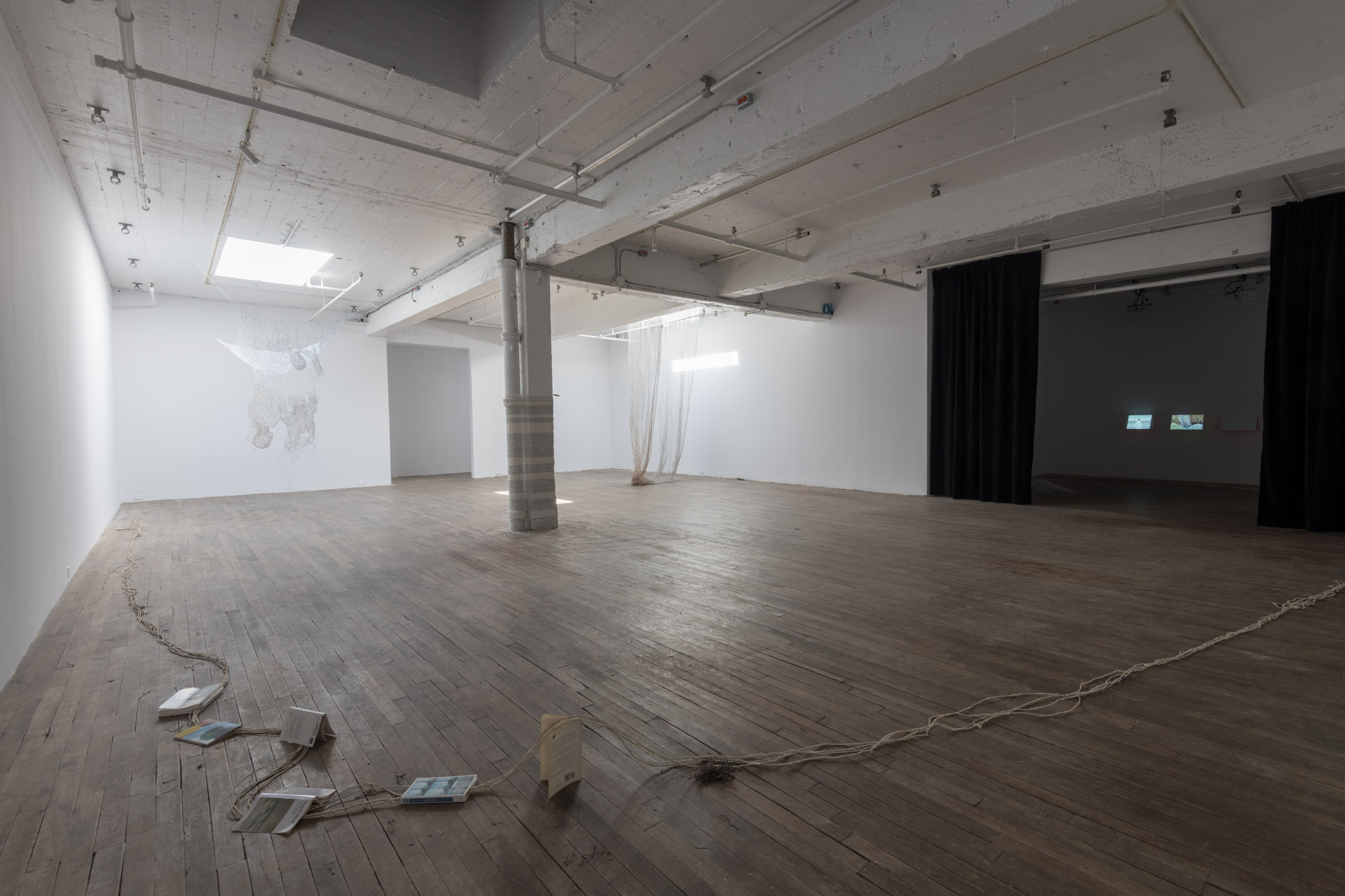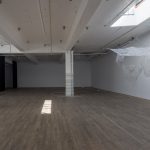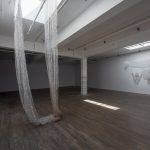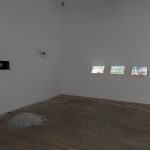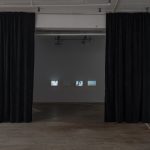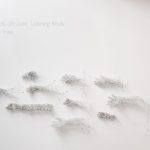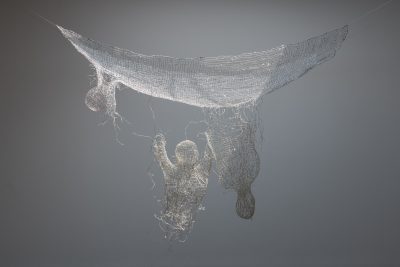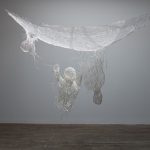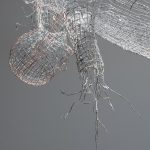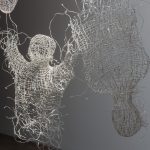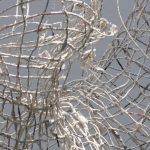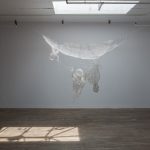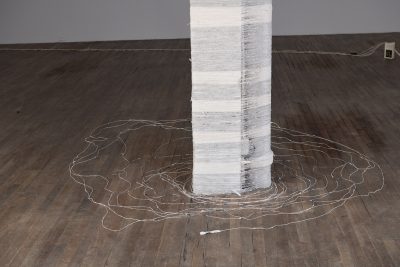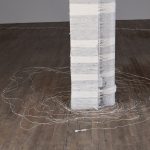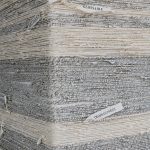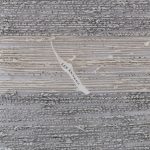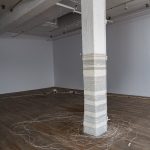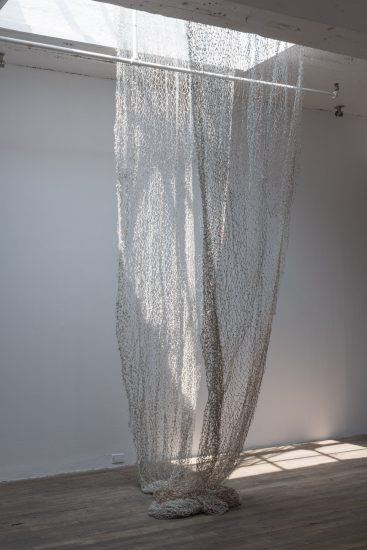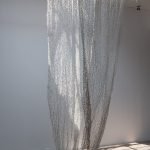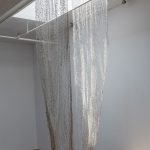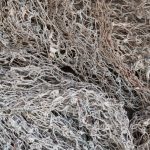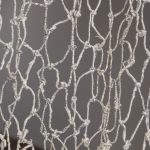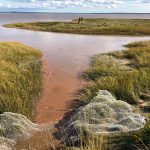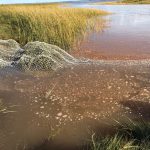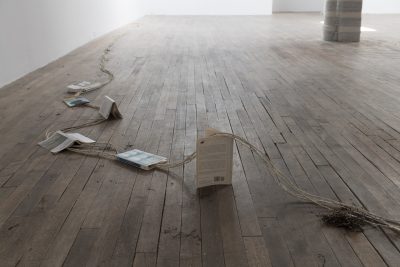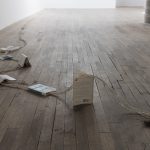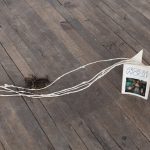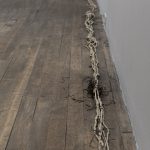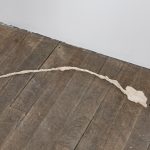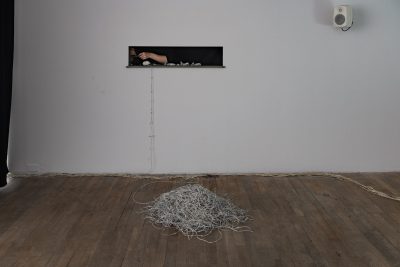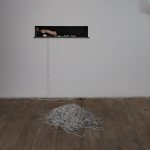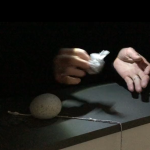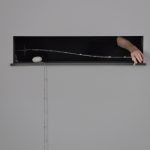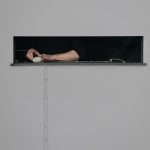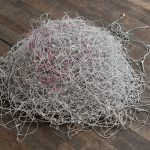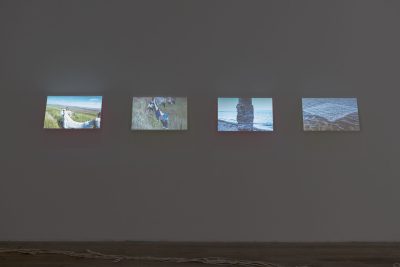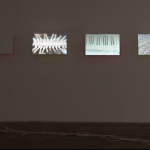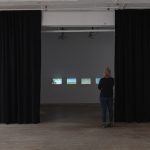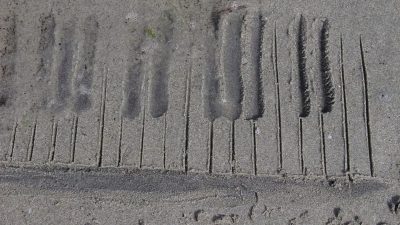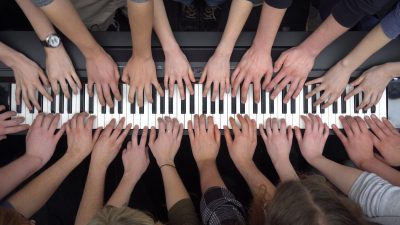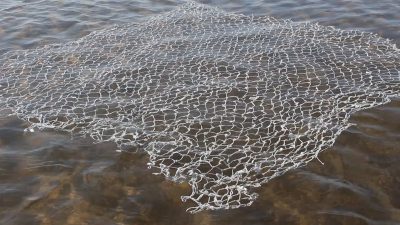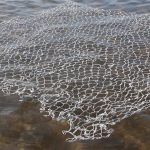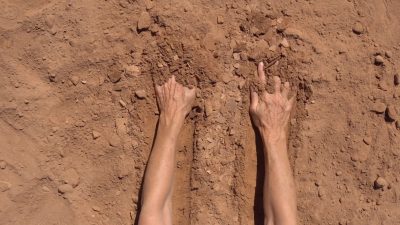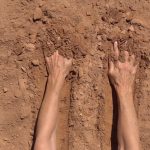Description
Nœuds d’écoute Listening Knots includes five text-based installations, a video projection and a continuous performance. Nœuds d’écoute Listening Knots comprend cinq installations, une projection vidéo et une performance.
Statement
The works in Nœuds d’écoute Listening Knots are inspired by Virginia Woolf’s, The Waves. Originally published in 1931, she called it her “play-poem”. I imagined myself as Virginia Woolf with a camera and a desire to play with bodies of text, the human body, the tide, the ocean and the land; this thought guided the making of the work during a two-year residency at the Université de Moncton and Mount Allison University in Sackville, New Brunswick. Students, friends, the ocean and the land were active participants.
Nœuds d’écoute Listening Knots includes text-based installations, a video projection and a continuous performance inspired by Virginia Woolf’s, The Waves. Published in 1931, she called it her “play-poem”. Imagine myself as Virginia Woolf with a camera and a desire to play with bodies of text, the human body, the tide, the ocean and the land. This thought guided the making of the work during a two-year residency at the Université de Moncton, Moncton and Mount Allison University, Sackville, New Brunswick. Students, friends, the ocean and the land were active participants.
A common story describing the origins of the world often includes a spinner/weaver and most often she is a woman. In Greek mythology, Clotho spins, Lachesis measures and Atropos cuts the thread. The threads of this history are still present in our expressions, woven into the fabric of our society. Let me spin you a tale. We hang by a thread.
The Japanese art of spinning paper into a thread is a technique I often use. Central to the Nœuds d’écoute Listening Knots project was the making of a fishing net using paper- thread spun from the pages of four dictionaries relevant to south-eastern New Brunswick: Le Glossaire acadien, Le Petit Larousse Illustré, Silus Tertias Rand’s English to Mi’kmaq and Webster’s Ninth New Collegiate. A variety of actions using the net were filmed and are presented as part of a series of video vignettes. “Listening knot” is a literal translation of “nœud d’écoute”, the French term for the knot used to make nets.
The Waves by Virginia Woolf is present as work titles and as material in the work. The heart of the book for me is that we are all connected, that there is a thread between me and everyone else, that our bodies and our genders are blurred. Growing up on a farm, I developed a profound respect for the rhythms of nature, but as a teenager, I watched in horror as my father, like many others at the time, cut down trees and brutally straightened a meandering creek to make room for a few more rows of corn. Nœuds d’écoute Listening Knots has allowed me to connect to the land and the water.
Karen Trask, 2019
—
Nœuds d’écoute / Listening Knots comprend des installations textuelles, une projection vidéo et une performance continue inspirée par Les vagues de Virginia Woolf. Elle l’appelait son « poème-jeu ». Imaginez-moi comme Virginia Woolf avec une caméra et le désir de jouer avec des corps de texte, le corps humain, la marée, l’océan et la terre. Cette pensée a guidé la réalisation de l’œuvre au cours d’une résidence de deux ans à l’Université de Moncton, à Moncton et à l’Université Mount Allison, à Sackville au Nouveau-Brunswick. Les étudiants, les amis, l’océan et la terre étaient des participants actifs.
Une fileuse/tisseuse fait souvent partie des histoires sur les origines du monde. Dans la mythologie grecque, Clotho file, Lachesis mesure et Atropos coupe. Les filons de cette histoire sont encore présents dans nos mots et nos expressions, tissés dans le tissu de notre société. Ne tenir qu’à un fil…
J’utilise souvent l’art japonais de filer le papier pour en faire un fil de papier. Au cœur du projet Nœuds d’écoute Listening Knots, se trouvait la fabrication d’un filet de pêche à l’aide d’un fil de papier filé à partir des pages de quatre dictionnaires pertinents pour le sud-est du Nouveau-Brunswick : Le Glossaire acadien, Le petit larousse illustré, le Silus Tertias Rand’s English to Mi’kmaq et le Webster’s Ninth New Collegiate. Diverses actions utilisant le filet ont été filmées et sont présentées dans le cadre d’une série de capsules vidéo. Le terme nœud d’écoute désigne le nœud utilisé pour fabriquer des filets de pêche.
L’œuvre Les vagues de Virginia Woolf est présente en tant que titres et en tant que matériau dans mon projet. Ce que je retiens de ce livre, c’est que nous sommes tous connectés, qu’il y a un fil conducteur entre moi et tous les autres, que nos corps et nos genres sont flous.
Ayant grandi sur une ferme, j’ai développé un profond respect pour les rythmes de la nature, mais à l’adolescence, j’ai vu avec horreur mon père, comme beaucoup d’autres à l’époque, abattre des arbres et redresser brutalement un ruisseau sinueux pour faire place à quelques rangées supplémentaires de maïs. Nœuds d’écoute Listening Knots m’a permis de me connecter à la terre et à l’eau.
Karen Trask, 2019 | Traduction : Mélissa Guay
